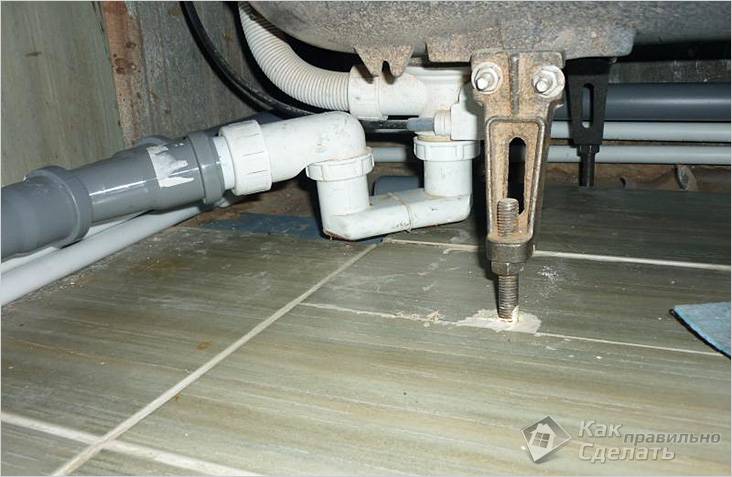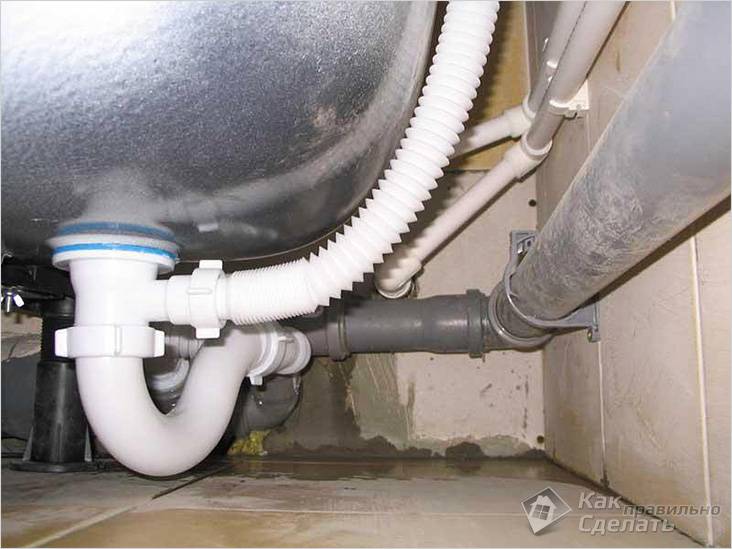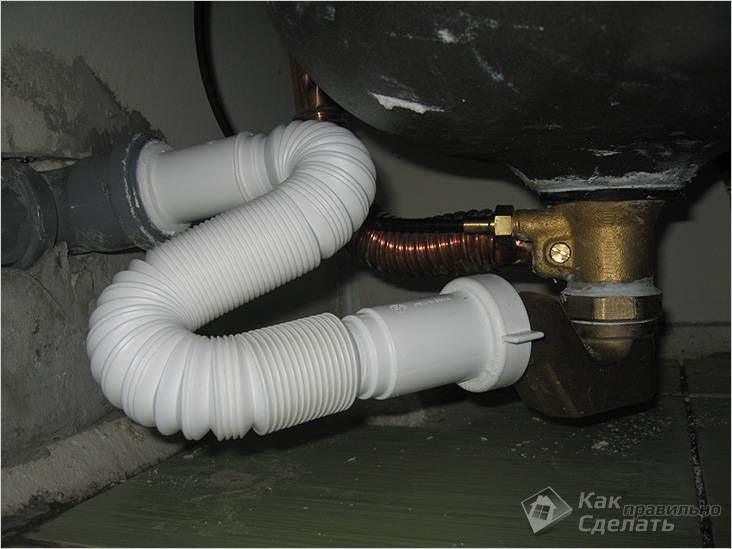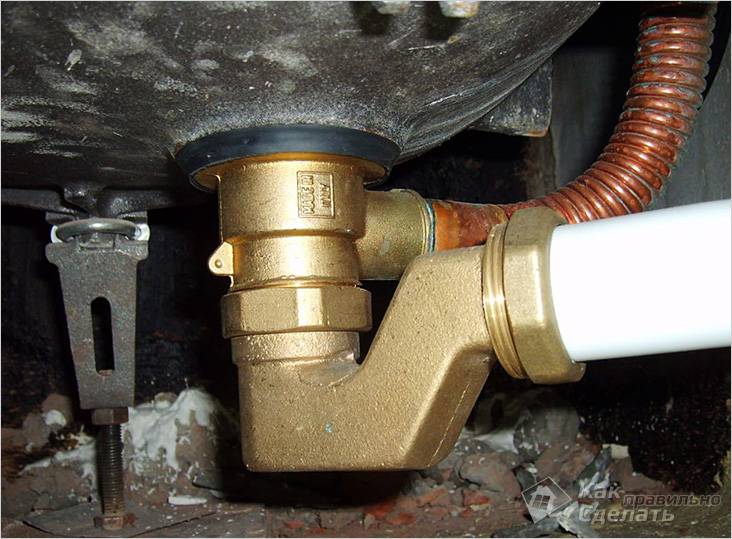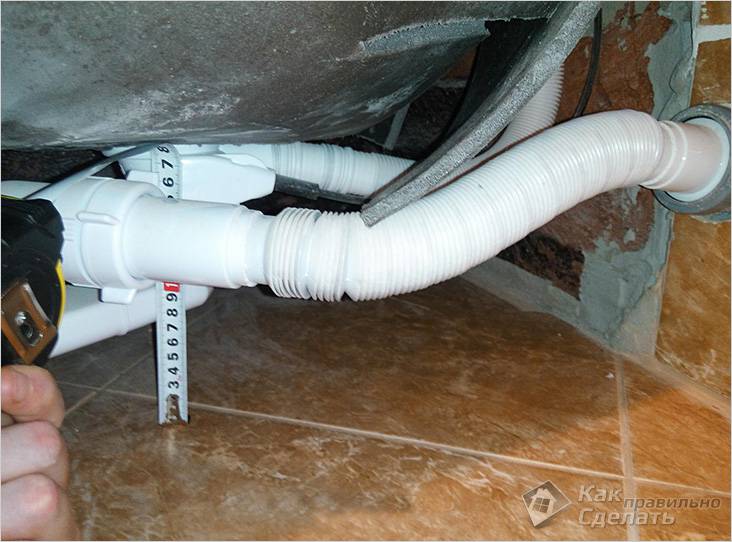Are you confronted with the fact that you do not know how to install a sink in the bathroom? In the minds of many people, such work can only be done by a professional plumber who has a large number of tools. However, not everything is as complicated as it might seem. After reading the material presented, you will understand that the installation of the drain can be done by hand.
Siphons can be of different heights. Therefore, the first step is to measure the distance from the bottom of the bathtub to the floor. It must be at least 15 cm. If the bathtub has not yet been installed, then it must be installed and firmly fixed - it must not move.
What is this device
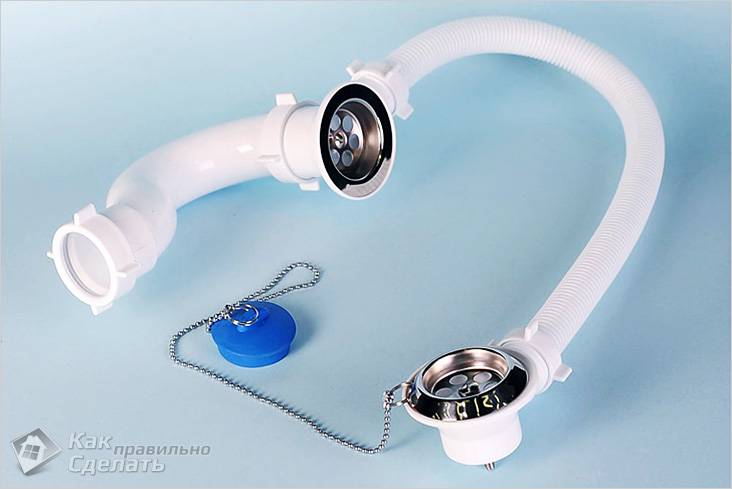
How to install a drain in the bathroom? For a person who is not familiar with this kind of terminology, such a question can only raise additional questions, but in fact it means that a special siphon with a branch for connecting an overflow will be installed in the bathroom. This is what we will talk about, but first you need to understand the device and the principle of operation of this device.
How the siphon works

Regardless of the design, the drain is equipped with a siphon, in which there must always be water, and if it evaporates or the hydraulic seal breaks down, then unpleasant odors from the sewer pipe will enter the room. To prevent this from happening, a fan pipe or a vacuum valve must be installed.
If the reason for installing a new drain is that it smells bad, then you need to determine whether the siphon is guilty of this.
Bath waste device
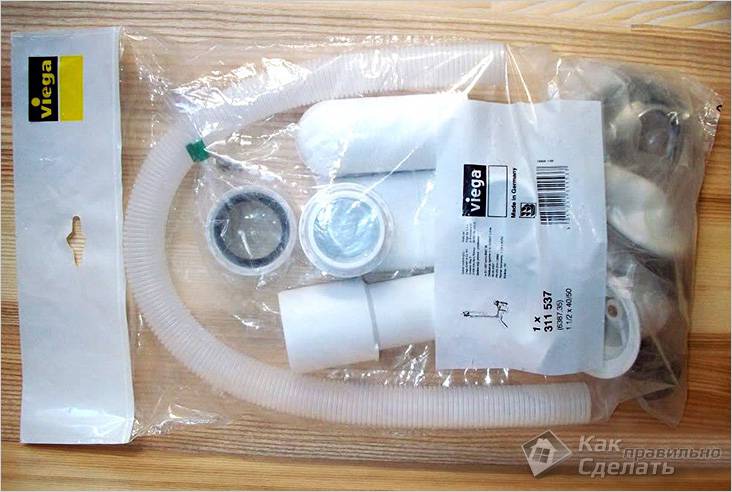
Having decided to purchase the simplest modern bath drain, you will be faced with the fact that instead of the device shown in the picture, you will be given a bag with a bunch of plastic parts. Do not be afraid! If not you, then your children or grandchildren assembled Lego bricks. You can be sure that the assembly of the siphon is much easier and faster.
How to assemble
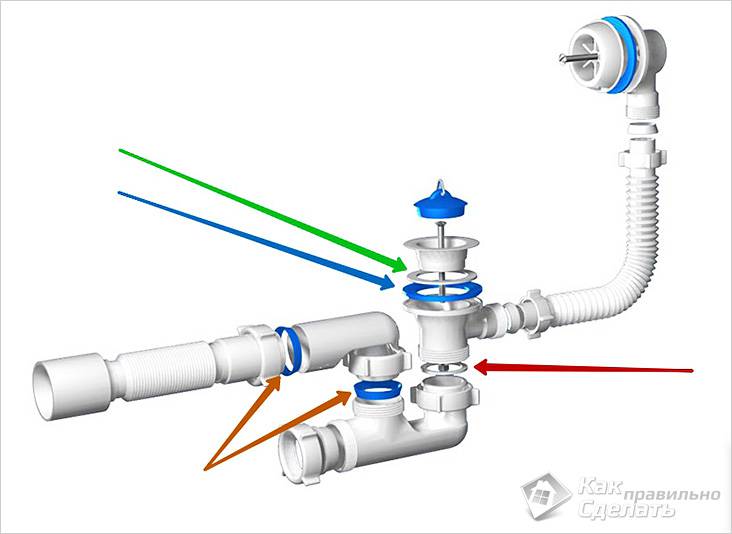
So, the siphon is purchased and delivered home. So that no detail is lost, you need to open the bag and lay out the contents on a wide table, or better on the floor. Inspect every detail carefully so that there is no flaw. Check if the threaded parts are loosely connected.
Branded siphons are packed in a cardboard box and complete with detailed assembly instructions. Defective parts hardly come across.
It is unlikely that you will be able to find a solid assembly instruction there - at best, a small drawing of a siphon. Since there are not so many details as it might seem, it will not be difficult to find its own place for each. What should be paid close attention to is which side to install the rubber seals. The fact is that they are conical. There is only one rule for installing these elastic bands - with a narrow part to the neck, and a wide one to the nut, which is clearly visible in the figure (shown with brown arrows). It is not worth crimping all the connections right away, as on-site adjustment may be required.
Drain installation

After collecting the drain, you need to install it in the bath.
- First of all, you need to check if there are any pieces of old gasket or any adhering debris left. The landing area must be clean and smooth (both inside and outside the tub). If this is not the case, then the installation should not proceed until the problem is corrected.
- The lower part of the siphon has a wide neck with a lowering from the inside - this is the seat for the gasket (shown by the blue arrow). If the length of the arms allows, then further installation can be done without an assistant. The siphon with the gasket laid on it is fed under the lower opening of the bath and is held in this position.
- From inside the bath, check that the bottom gasket does not move to the side.
- A gasket is placed on the drain hole (the green arrow points to it), the top cover with a grid is installed and screwed on. In modern models, fixation is carried out with a copper screw, in older models, the cover is threaded and screwed directly into the siphon.

- In the same way, the overflow hole is strapped and connected to the siphon using a flexible hose with pre-fitted nuts and conical washers.
- The next step is to connect to the sewer. As a rule, there are no problems when connecting to PVC sewer pipes, and in order to make a connection with a cast iron pipe, you will have to purchase a rubber sleeve of a suitable size.
- Having crimped all the connections, you need to check if there are any leaks anywhere. This is done simply - water is collected in the bathtub, and you need to look under the bathtub. Then you need to close the plug and check if water drops appear from below when the bath is a little filled. The final step will be to check the tightness of the overflow installation. To do this, you need to collect water until it flows into the siphon through the overflow.
Is it dry under the bathroom? Then the installation of the siphon is successful.
Plastic parts are not very durable, so when fixing them, you do not need to exert much effort. Having found a leak, disassemble the connection and, having lubricated the gasket with sanitary silicone, reassemble.
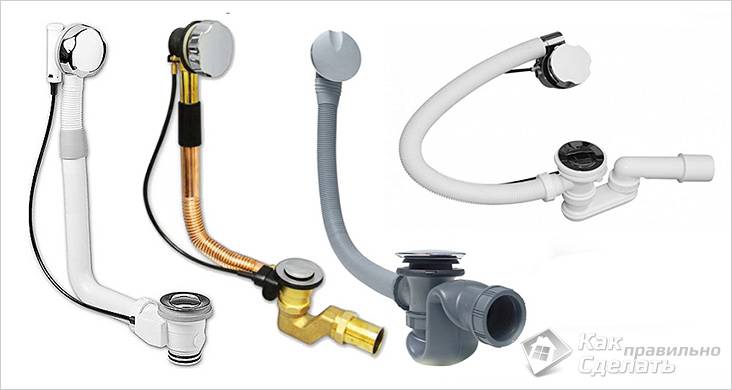
Now let's take a look at what an automatic drain and overflow is, and how to install it correctly.
It is important to take into account that among these devices there are models in which the drain is controlled in different ways.
- Drain and overflow machine.
- Drain-overflow semiautomatic device.
It would be wrong to say that one is convenient to use and the other is not, since they are structurally different. Therefore, everyone chooses the drain mechanism at their own discretion.
If we talk about cheap models, then the automatic overflow will not last long. Since it cannot be repaired, the entire device will soon have to be changed again.
Installation of a semi-automatic siphon

Semi-automatic siphons (as well as automatic ones) can be made from:
- sanitary plastics;
- brass;
- copper;
- chrome steel;
- silumin.
Silumin siphon is the worst choice. Not only can it break during installation, but after a while it simply crumbles. Products made of copper, brass and chrome-plated steel can be called durable, but due to their high cost, they are not in great demand.

Products made of plumbing plastic are stronger than silumin siphons and more durable, since they are not afraid of an aggressive environment. A significant role in the popularity of plastic products is played by their low cost and ease of installation. As for the assembly, the process is not much more complicated than the installation of an ordinary plastic drain-overflow, and the only difference is that instead of the grilles, you need to install control elements, as shown in the diagram above.
Installation of an automatic siphon
Installing an automatic drain is even easier than a semi-automatic one, since there is no need to install controls - the whole mechanism is in the lower part of the siphon.
If water supply to the bowl is also provided for in the automatic drain, then such a device must be installed by a representative of the company, otherwise from the moment you perform the installation yourself, the manufacturer will no longer fulfill the warranty conditions. To put it simply, it will not be repaired or replaced under warranty.

The purchased drainage system must be convenient and reliable, which must be taken care of in advance. When making a choice, it is important to pay attention to the following:
- The drain mechanism can be controlled by means of a valve, button or handle. Decide in advance and firmly decide which mechanism will suit you and will be the most convenient. If it's hard to imagine, then you can go to a plumbing store and ask the seller to show you different models.
- If you are purchasing a metal drain-overflow system, then you definitely need to find out what metal it is made of. Some manufacturers of silumin products apply spraying on them and outwardly they are very similar to brass products.
- The white bathtub will be in harmony with any colors of the siphon lids. The main thing is that there is no clumpiness and disharmony with the style of the room.
- Automatic or semi-automatic? Do not rush to make a decision just when you hear the word machine. The draining method is fundamentally different. In an automatic system, in order to activate the drain mechanism, force must be applied to the cover that closes the drain hole. If the water needs to be drained while taking a bath, then there is no problem. The semi-automatic system controls the drainage system from the outside.
- When choosing a semi-automatic system, it is important to pay attention to the location of the control cable - it can be both outside and inside the overflow pipe. The last option for the location of the cable is more aesthetic, but cannot be repaired.
Installing a siphon on a bathtub yourself is easy. You need to follow the advice given in the instructions for assembling and installing a specific equipment model ..
Video
This video shows you how to assemble a simple bath siphon:
See how the tub trim is replaced:
Photo
